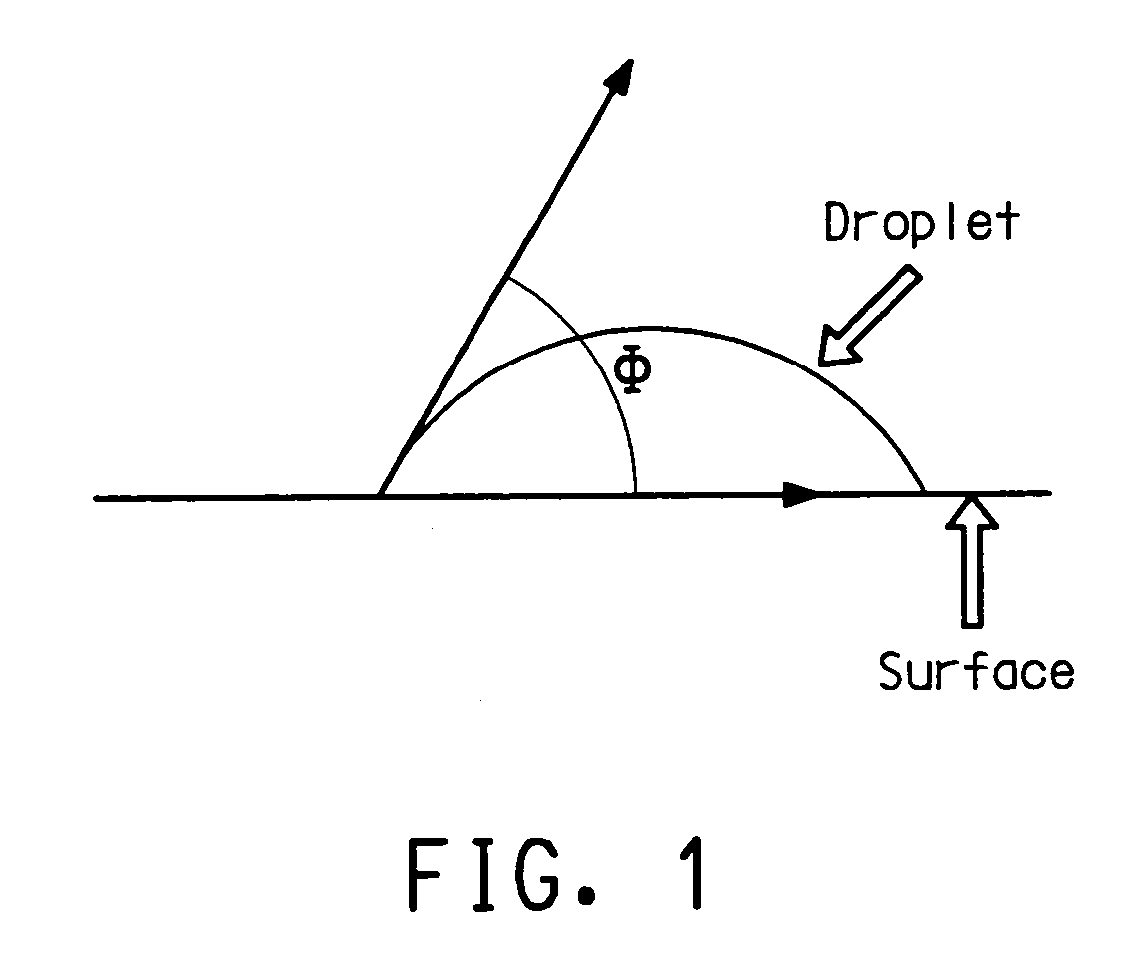Bilayer anode
a bilayer anode and anode technology, applied in the field of anodes, can solve the problems of less effective injection of holes into el materials, reduced device life, and insufficient injection of holes
- Summary
- Abstract
- Description
- Claims
- Application Information
AI Technical Summary
Benefits of technology
Problems solved by technology
Method used
Image
Examples
example 1
[0221] This example illustrates preparation of an aqueous carbon nanotube (“CNT”) dispersion, and work function of the film spin-coated from the dispersion:
[0222] In this example, dispersing CNT in water was accomplished using Triton-X-100 as a dispersing agent. Triton X-100 is a trade mark for octylphenoxy polyethoxy ethanol. It is a non-ionic surfactant and has no influence in affecting Wf of CNT. A stock solution was made by dissolving 1.035 g Triton X-100 in 98.9922 g deionized water, which amounts to 1.05% (w / w) in water. CNT used in this example is L0200 single wall CNT (Laser / raw grade) purchased from CNI at Houston, Tex., USA. 0.0709 g CNT were placed in a small glass jug to which 8.5802 g of the Triton X-100 solution and 25.5112 g de-ionized water were added. The mixture was subjected to sonication for 15 minutes continuously using a Branson Sonifier Model 450 having power set at #3. The glass jug was immersed in ice water contained in a tray to remove heat produced from i...
example 2
[0224] This example illustrates preparation of an aqueous CNT dispersion for the use in Example 4 as a discrete bilayer with the electrically polymer dispersion made in Example 3.
[0225] In this example, dispersing CNT in water was also accomplished by using Triton-X-100 as a dispersing agent. 0.1541 g CNT, 17.69 g of the Triton X-100 stock solution described in Example 1 and 19.4589 g deionized water were added to a glass jug. The mixture was subjected to sonication for 13.5 minutes continuously using a Branson Sonifier Model 450 having power set at #3. The glass jug was immersed in ice water contained in a tray to remove heat produced from intense cavitation. The CNT formed a smooth, stable dispersion without any sign of sedimentation for many weeks.
[0226] A couple of drops of the dispersion were placed on a microscope slide to form a thin, transparent film. The thin film was painted with a room temperature silver paste to form two parallel lines as electrodes for measurement of ...
example 3
[0227] This example illustrates preparation of electrically conducting poly(3,4, ethylenedioxythiophene) complexed with Nafion® for forming a top layer on a CNT film illustrated in Example 4. A 12.0% (w / w) Nafion® with an EW of 1050 is made using a procedure similar to the procedure in U.S. Pat. No. 6,150,426, Example 1, Part 2, except that the temperature is approximately 270° C.
[0228] In a 200 mL reaction kettle are put 1088.2 g of 12% solid content aqueous Nafion® (124.36 mmol SO3H groups) dispersion, 1157 g water, 0.161 g (0.311 mmol) iron(III)sulfate (Fe2(SO4)3), and 1787 mL of 37% (w / w) HCl (21.76 mmol). The reaction mixture is stirred for 15 min at 276 RPM using an overhead stirrer fitted with a double-stage-propeller-type blade. Addition of 8.87 g (38.86 mmol) ammonium persulfate (Na2S2O8) in 40 mL of water, and 3.31 mL ethylenedioxythiophene (EDT) is started from separate syringes using addition rate of 3.1 mL / h for (NH4)2S2O8 / water and 237 mL / h for EDT while continuous st...
PUM
| Property | Measurement | Unit |
|---|---|---|
| Work function | aaaaa | aaaaa |
| Solubility (mass) | aaaaa | aaaaa |
| Electrical conductor | aaaaa | aaaaa |
Abstract
Description
Claims
Application Information
 Login to View More
Login to View More - Generate Ideas
- Intellectual Property
- Life Sciences
- Materials
- Tech Scout
- Unparalleled Data Quality
- Higher Quality Content
- 60% Fewer Hallucinations
Browse by: Latest US Patents, China's latest patents, Technical Efficacy Thesaurus, Application Domain, Technology Topic, Popular Technical Reports.
© 2025 PatSnap. All rights reserved.Legal|Privacy policy|Modern Slavery Act Transparency Statement|Sitemap|About US| Contact US: help@patsnap.com



